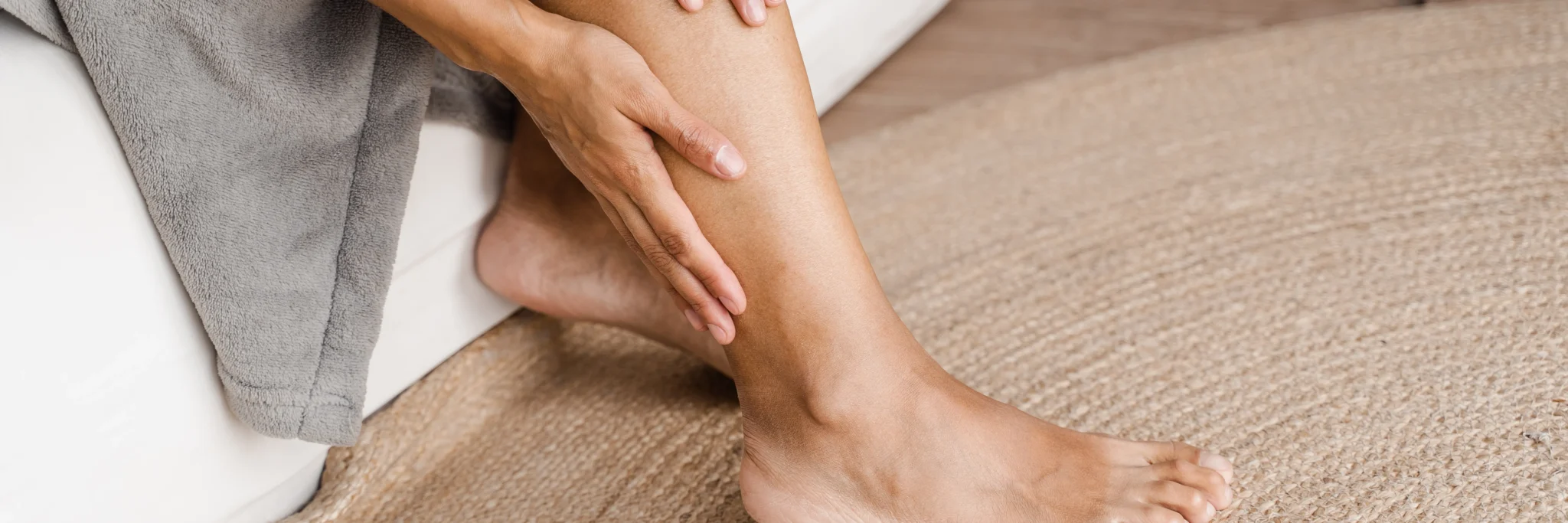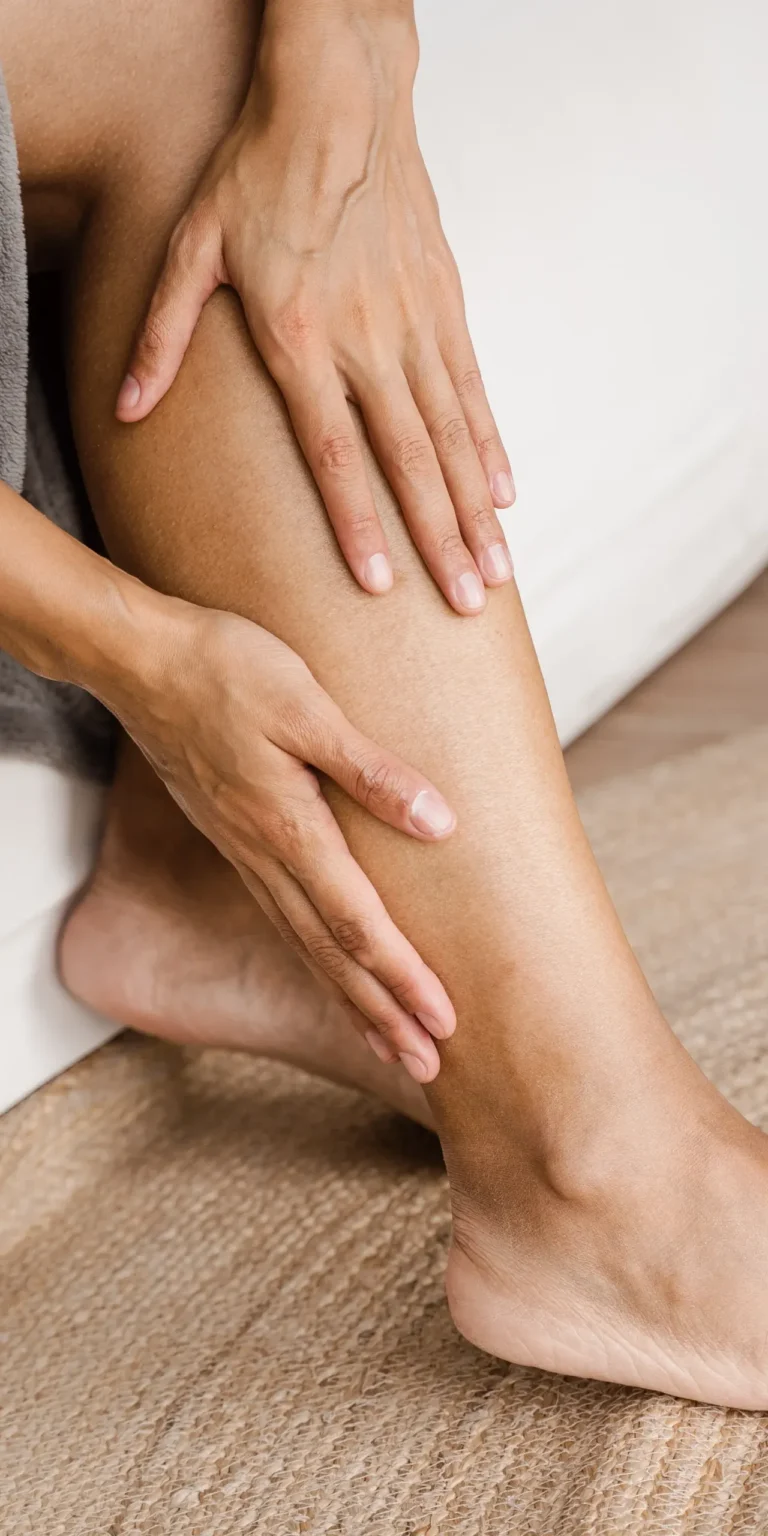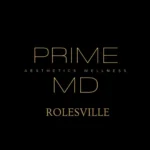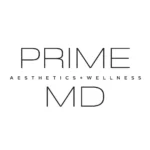


Achieve clearer Skin and Renewed Confidence with Sclerotherapy
Sclerotherapy for the Safe, Effective Treatment of Spider and Reticular Veins
Sclerotherapy is a minimally invasive solution designed to diminish the appearance of unsightly veins by gently collapsing and fading them from view—restoring smooth, even-toned skin with precision and ease.
Locations Offering Sclerotherapy Services
Prime MD Raleigh, North Carolina
Prime MD Rolesville, North Carolina
Prime MD Johnson City, Tennessee
Bothered by Visible Veins on Your Legs or Ankles?
Sclerotherapy is a minimally invasive solution designed to diminish the appearance of unsightly veins by gently collapsing and fading them from view—restoring smooth, even-toned skin with precision and ease.
Sclerotherapy is a gold-standard treatment for reducing the appearance of spider veins and small varicose veins, most commonly found on the legs and ankles. This non-surgical procedure involves the precise injection of a specialized solution directly into the affected veins, causing them to safely collapse and gradually fade from view.
Ideal for individuals seeking a refined, confident look without the downtime of invasive procedures, sclerotherapy offers visible, lasting results in a series of quick, in-office treatments. Whether you’re preparing for warmer weather or simply want to feel more confident in your skin, this time-tested therapy restores clarity and elegance to your natural appearance.
Our experienced providers ensure each treatment is performed with precision, comfort, and care—because you deserve to walk confidently in every season of life.
What areas can be treated with sclerotherapy?
Sclerotherapy is most commonly used on the thighs, calves, ankles, and behind the knees—where spider veins and small varicose veins often appear.
How many sessions will I need?
Most clients require a series of treatments spaced a few weeks apart. The number of sessions depends on the extent of the veins being treated and your desired outcome.
Is there any downtime?
There is little to no downtime. You may resume normal activities immediately, though we recommend avoiding intense exercise and sun exposure for a short period post-treatment.
Is sclerotherapy painful?
Most clients report only minor discomfort, such as a slight burning or cramping sensation during injection. The procedure is generally well tolerated.
When will I see results?
Improvement is typically visible within 3–6 weeks for small veins and up to 3–4 months for larger ones. Results continue to improve with each session.
See what Others Are Saying
Prime MD Raleigh, North Carolina
Prime MD Johnson City, Tennessee
Prime MD Rolesville, North Carolina
Follow us on Instagram
We fall in love with this. every. single. day.
#fallinlovewithyourskin🧖🏼♀️ #fallinloveagainandagain #rolesvillenc #primemdaesthetics #wakeforestnc #raleighmedspa #raleighbotox #botox #dysport #hydrafacials #aesthetics #lipfiller #skinrejuvination #medspalife #selfcare #wellness

We fall in love with this. every. single. day.
#fallinlovewithyourskin🧖🏼♀️ #fallinloveagainandagain #rolesvillenc #primemdaesthetics #wakeforestnc #raleighmedspa #raleighbotox #botox #dysport #hydrafacials #aesthetics #lipfiller #skinrejuvination #medspalife #selfcare #wellness
...
Happy National Aesthetician Day to our two amazing estis!
@_skinbyrae and @courtaesthetica , thank you for the attention and care you give to your patients and your team. We are so lucky to have you! ✨️

Happy National Aesthetician Day to our two amazing estis!
@_skinbyrae and @courtaesthetica , thank you for the attention and care you give to your patients and your team. We are so lucky to have you! ✨️
...
✨️ INTRODUCING ✨️
Our newest medical aesthetician, Courtney Elsmore, LE!
Some of you may recognize Courtney from our Raleigh location, but the Rolesville office is thrilled that Courtney will be all ours on Thursdays and Fridays for all of your favorite self-care rituals! 💆🏼♀️
.
.
.
A little about Court:
🌟 HER FAV TREATMENT: "A Hydrafacial or Microneedling treatment!"
🌟 WHERE YOU`LL FIND HER ON THE WEEKENDS: "Spending quality time with my family and friends"
🌟 STARBUCKS DRINK: "A green tea matcha" 🍵
🌟 WHAT SHE WANTS YOU TO KNOW: "One thing I wish patients knew is that I don’t just see your skin, I see YOU. Skincare is about feeling confident and comfortable in your own skin, which takes patience, consistency, and trust!"
Courtney specializes in custom skincare regimens and problematic skin. As a long-term acne sufferer herself, she understands the emotions and devotion necessary to achieve your best skin and will help you through every step of the process! 🤍
To celebrate her arrival, Courtney is offering complimentary facials for a limited time to new clients! Call 919-948-6355 option 2 to book with her ✨️
Be sure to follow us and Courtney @courtaesthetica for future promotions and events!

✨️ INTRODUCING ✨️
Our newest medical aesthetician, Courtney Elsmore, LE!
Some of you may recognize Courtney from our Raleigh location, but the Rolesville office is thrilled that Courtney will be all ours on Thursdays and Fridays for all of your favorite self-care rituals! 💆🏼♀️
.
.
.
A little about Court:
🌟 HER FAV TREATMENT: "A Hydrafacial or Microneedling treatment!"
🌟 WHERE YOU`LL FIND HER ON THE WEEKENDS: "Spending quality time with my family and friends"
🌟 STARBUCKS DRINK: "A green tea matcha" 🍵
🌟 WHAT SHE WANTS YOU TO KNOW: "One thing I wish patients knew is that I don’t just see your skin, I see YOU. Skincare is about feeling confident and comfortable in your own skin, which takes patience, consistency, and trust!"
Courtney specializes in custom skincare regimens and problematic skin. As a long-term acne sufferer herself, she understands the emotions and devotion necessary to achieve your best skin and will help you through every step of the process! 🤍
To celebrate her arrival, Courtney is offering complimentary facials for a limited time to new clients! Call 919-948-6355 option 2 to book with her ✨️
Be sure to follow us and Courtney @courtaesthetica for future promotions and events!
...
⭐️⭐️⭐️⭐️⭐️
This is the "why" behind what we do! 🫶
.
.
.
#beYOUtiful #bestmedsparaleigh #selfcareraleigh #facialbalancingraleigh #raleighfacial #raleighhydrafacial #rolesvillenc #wakeforestnc

⭐️⭐️⭐️⭐️⭐️
This is the "why" behind what we do! 🫶
.
.
.
#beYOUtiful #bestmedsparaleigh #selfcareraleigh #facialbalancingraleigh #raleighfacial #raleighhydrafacial #rolesvillenc #wakeforestnc
...
For a limited time, we`re offering all new aesthetics clients 15% off of their first visit! 🎉
Come experience the luxury and expertise our team has to offer, and let us help you look and feel your best!
.
.
.
#inmyprime #raleighnc #bestofraleigh #rolesvillenc #selfcareraleigh #nurseinjectorraleigh #estheticianraleigh #bestfacialraleigh #facialbalancingraleigh #lipfillerraleigh

For a limited time, we`re offering all new aesthetics clients 15% off of their first visit! 🎉
Come experience the luxury and expertise our team has to offer, and let us help you look and feel your best!
.
.
.
#inmyprime #raleighnc #bestofraleigh #rolesvillenc #selfcareraleigh #nurseinjectorraleigh #estheticianraleigh #bestfacialraleigh #facialbalancingraleigh #lipfillerraleigh
...
The. Best. Feeling. 🧖🏻♀️✨
#rolesvillenc #primemdaesthetics #wakeforestnc #raleighmedspa #hormonereplacementtherapy #primemdwellness #skin #hydrafacials #rolesvillemedspa #botox #facials

The. Best. Feeling. 🧖🏻♀️✨
#rolesvillenc #primemdaesthetics #wakeforestnc #raleighmedspa #hormonereplacementtherapy #primemdwellness #skin #hydrafacials #rolesvillemedspa #botox #facials
...
Our favorite place to be! 💉🧖🏻♀️🪞 ...
Just kidding. We’re looking for YOU!
📅 Link in bio to book
🤍 We can’t wait to see you
.
.
.
#rolesvillenc #primemdaesthetics #lookingforaman #raleighbotox #raleighaesthetics #wakeforestnc #hormonereplacementtherapy #primemdwellness #youngsvillenc #newpatients #booknow #skincare #beauty

Just kidding. We’re looking for YOU!
📅 Link in bio to book
🤍 We can’t wait to see you
.
.
.
#rolesvillenc #primemdaesthetics #lookingforaman #raleighbotox #raleighaesthetics #wakeforestnc #hormonereplacementtherapy #primemdwellness #youngsvillenc #newpatients #booknow #skincare #beauty
...
Sorry I really was busy I promise 🧖🏻♀️💉
.
.
.
.
.
.
.
.
.
.
#rolesvillenc #primemdaesthetics #wakeforestnc #raleighmedspa #raleighbotox #botox #hormonereplacementtherapy #primemdwellness #dysport #hydrafaci̇al #chemicalpeels #skincare #youngsvillenc

Sorry I really was busy I promise 🧖🏻♀️💉
.
.
.
.
.
.
.
.
.
.
#rolesvillenc #primemdaesthetics #wakeforestnc #raleighmedspa #raleighbotox #botox #hormonereplacementtherapy #primemdwellness #dysport #hydrafaci̇al #chemicalpeels #skincare #youngsvillenc
...
Lip filler but make it natural 💉✨ Obsessed with these beauties from @juliainjects #rolesvillemedspa #lipfillerbeforeandafter #raleigh #injector #wakeforestnc #rolesvilleinjector #rolesvillenc #wakeforestinjector #primemdaesthetics

Lip filler but make it natural 💉✨ Obsessed with these beauties from @juliainjects #rolesvillemedspa #lipfillerbeforeandafter #raleigh #injector #wakeforestnc #rolesvilleinjector #rolesvillenc #wakeforestinjector #primemdaesthetics ...
BEACH, PLEASE
Get your skin summer-ready with our body treatment special! When you purchase a package of 3 treatments - choose from a back facial, body Hydrafacial, or chemical peel on the back or décolleté & get the 3rd one half off.
These treatments are fully customized to target concerns like body acne, pigmentation, and uneven skin tone so you can feel confident from every angle.
(Package must be purchased as a set of 3)
#rolesvillenc #primemdaesthetics #raleighaesthetics #raleighmedspa #botox #chemicalpeel #backfacial #skin #wakeforestnc #wakecountymedspa #ncwellness #ncbusiness #summerglow #skintreatment #healthyskin #youngsvillenc

BEACH, PLEASE
Get your skin summer-ready with our body treatment special! When you purchase a package of 3 treatments - choose from a back facial, body Hydrafacial, or chemical peel on the back or décolleté & get the 3rd one half off.
These treatments are fully customized to target concerns like body acne, pigmentation, and uneven skin tone so you can feel confident from every angle.
(Package must be purchased as a set of 3)
#rolesvillenc #primemdaesthetics #raleighaesthetics #raleighmedspa #botox #chemicalpeel #backfacial #skin #wakeforestnc #wakecountymedspa #ncwellness #ncbusiness #summerglow #skintreatment #healthyskin #youngsvillenc
...
2025 PrimeMD Spring Soirée! ...
Winter season is here! Book your facials with @theskintaylar and @kln.aesthetics ! 🧖♀️
📞(423)-430-8323
✉️Jc@primemdcenter.com
🔗primemdcenter.com

Winter season is here! Book your facials with @theskintaylar and @kln.aesthetics ! 🧖♀️
📞(423)-430-8323
✉️Jc@primemdcenter.com
🔗primemdcenter.com
...
We love hearing your questions!
Drop more questions in the comment section and we will message you individually!💋
📞(423)-430-8323
✉️Jc@primemdcenter.com
🔗primemdcenter.com

We love hearing your questions!
Drop more questions in the comment section and we will message you individually!💋
📞(423)-430-8323
✉️Jc@primemdcenter.com
🔗primemdcenter.com
...
Winter Soirée Specials✨
December 1st-5th‼️
📞(423)-430-8323
✉️Jc@primemdcenter.com
🔗primemdcenter.com

Winter Soirée Specials✨
December 1st-5th‼️
📞(423)-430-8323
✉️Jc@primemdcenter.com
🔗primemdcenter.com
...
Book with us now!! 📞(423)430-8323
https://primemdcenter.com/contact-us/contact-prime-md-johnson-city/

Book with us now!! 📞(423)430-8323
https://primemdcenter.com/contact-us/contact-prime-md-johnson-city/
...
Our beautiful @injector.linds in action! 💉🤍 ...
mini lip plump for maintenance done by the best @injector.linds!! 💋💋

mini lip plump for maintenance done by the best @injector.linds!! 💋💋 ...
Taylar’s favorite product of the week!✨
-This product is 5% TSC and decreases inflammation
-Reduces redness
-Improves tone and texture.
-This product includes hyaluronic acid, glycerin, and propanedial
https://primemdcenter.com/shop/

Taylar’s favorite product of the week!✨
-This product is 5% TSC and decreases inflammation
-Reduces redness
-Improves tone and texture.
-This product includes hyaluronic acid, glycerin, and propanedial
https://primemdcenter.com/shop/
...
👻🖤 BOOTOX GIVEAWAY 🖤👻
Did your “Boo” not come through this fall with a cozy boo basket for you?? No worries 😉 PrimeMD has you covered 🖤
How to Enter (Choose one of the following):
1.) Purchase minimum 50 units of Tox
2.) Purchase either Microneedling Package
3.) Spend $600+ on Bootox Day (October 16th)
Winners will be drawn on Monday, October 20th 🤍
These baskets are valued over $750 🤯 with a special surprise in them, TRUST ME, you don’t want to miss out on these!! We will see you soon ❤️
Call/Text 423.430.8323, DM us, or Click the link in bio to Book Now!! 🖤🤍👻

👻🖤 BOOTOX GIVEAWAY 🖤👻
Did your “Boo” not come through this fall with a cozy boo basket for you?? No worries 😉 PrimeMD has you covered 🖤
How to Enter (Choose one of the following):
1.) Purchase minimum 50 units of Tox
2.) Purchase either Microneedling Package
3.) Spend $600+ on Bootox Day (October 16th)
Winners will be drawn on Monday, October 20th 🤍
These baskets are valued over $750 🤯 with a special surprise in them, TRUST ME, you don’t want to miss out on these!! We will see you soon ❤️
Call/Text 423.430.8323, DM us, or Click the link in bio to Book Now!! 🖤🤍👻
...
Everything is better after lip day. 👄@injector.linds

Everything is better after lip day. 👄@injector.linds ...
Come along and open with me for the day!
PrimeMD Aestetics+Wellness
121 N. Commerce St
Johnson City, TN 37604
423-430-8323
…………………….
Come see us or give us a call to book your appointment with one of our Estheticians and or our Injector!!
#Medspa#minifacials#skingoals#botox#fillers#glowing#agegracefully#selfcare#lipfiller

Come along and open with me for the day!
PrimeMD Aestetics+Wellness
121 N. Commerce St
Johnson City, TN 37604
423-430-8323
…………………….
Come see us or give us a call to book your appointment with one of our Estheticians and or our Injector!!
#Medspa#minifacials#skingoals#botox#fillers#glowing#agegracefully#selfcare#lipfiller
...
I heard that Botox helps with depression and we take that to another level. Nothing like a little visit to your favorite med spa to take the edge off!
#fyp#foryou#medspa#botox#fillers#primemdaesthetics#lipfiller#minifacials#medicalgradeskincare#hydrafacial#genofacial

I heard that Botox helps with depression and we take that to another level. Nothing like a little visit to your favorite med spa to take the edge off!
#fyp#foryou#medspa#botox#fillers#primemdaesthetics#lipfiller#minifacials#medicalgradeskincare#hydrafacial#genofacial
...
We love all of our clients late or early!!🫶🏼🫶🏼

We love all of our clients late or early!!🫶🏼🫶🏼 ...


